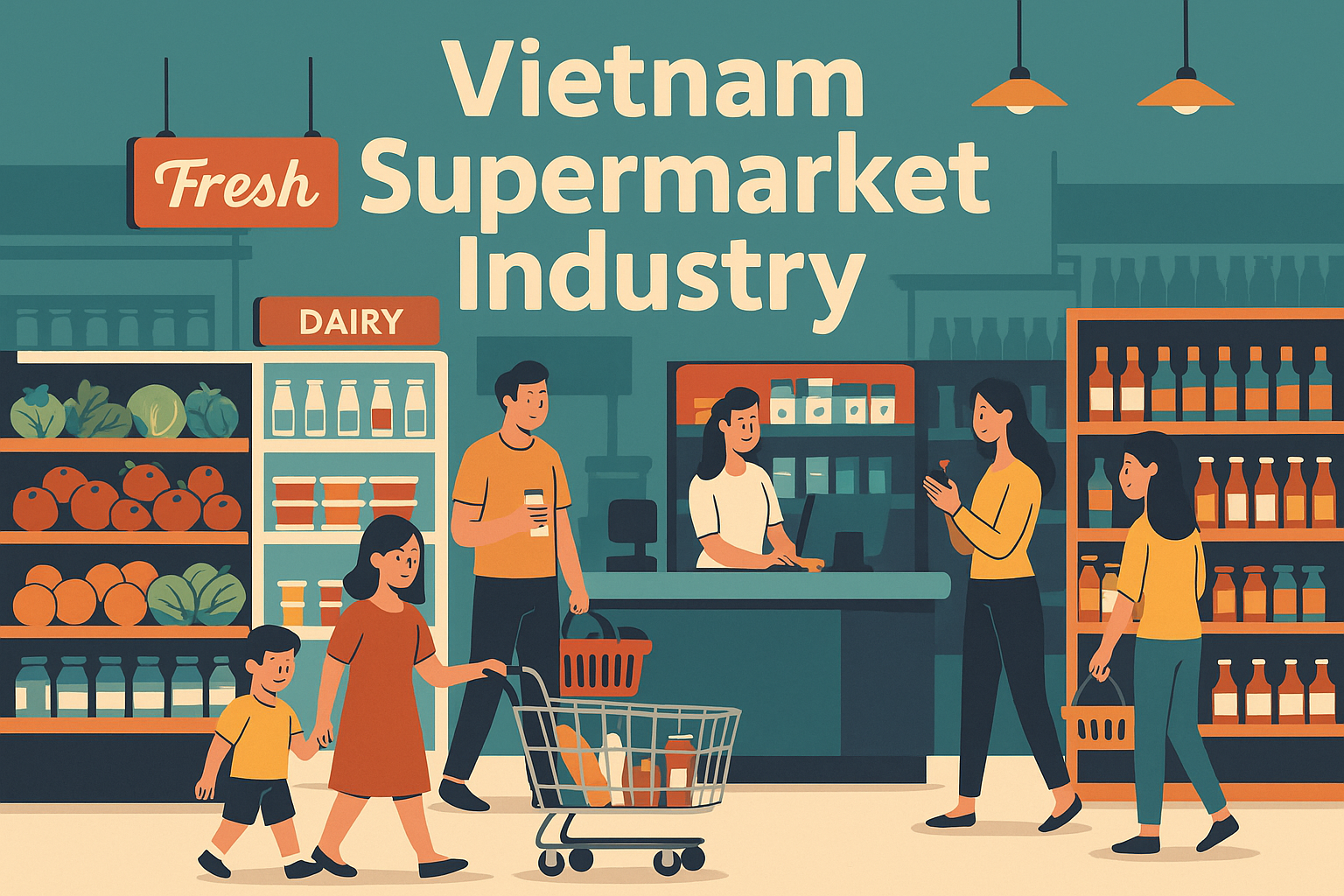Vietnam Supermarket Industry: Retail Revolution in SEA's Rising Market

Strong 8k brings an ultra-HD IPTV experience to your living room and your pocket.
The Vietnam supermarket industry is undergoing transformative growth driven by rapid urbanization, rising middle-class incomes, and evolving consumer behaviors. With retail modernization and growing preference for one-stop shopping, the sector has gained momentum. For retailers, investors, and policymakers, gauging the market's challenges and exploring opportunities is vital to harnessing its high-potential trajectory and consumer promise.
Key Challenges in the Vietnam Supermarket Industry
Competitive Threat from Traditional Markets
Despite urban growth, traditional wet markets hold strong cultural appeal due to fresh produce, bargaining flexibility, and local vendor loyalty. Supermarkets must strike a balance: offering freshness, competitive prices, and service excellence to win over loyal shoppers.
High Operating Costs & Thin Margins
Vietnam’s retailers face rising rental prices—especially in city centers—along with staff costs, inventory carry, and shrinkage. Shoppers remain price-sensitive, requiring supermarkets to optimize supply chain efficiencies and maintain lean operations.
Supply Chain Inefficiencies
Logistical issues like poor cold-chain infrastructure, long lead times from farms, fragmented distribution networks, and seasonal supply volatility impact produce quality and cost. Building strong farm-to-shelf pipelines and logistics resilience is critical.
Regulatory & Compliance Complexity
Navigating food safety regulations, import licensing, and labeling laws can be time- and resource-consuming—particularly for imported goods (dairy, frozen foods) and for supermarkets expanding into multiple provinces.
Digital & E-Commerce Disruption
Vietnam's supermarket players face mounting pressure from e-grocery platforms, dark kitchens, and delivery apps. Providing seamless online-offline shopping, loyalty experiences, and digital convenience is non-negotiable to retain customer loyalty.
Explore how the India supermarket industry is countering traditional channels with hypermarket formats, private labels, and franchising strategies to balance price and convenience.
Emerging Opportunities in the Vietnam Supermarket Industry
Private-Label Growth & SKU Innovation
Vietnamese retailers are launching private-label products, from staples to organic and premium lines, enhancing margins and creating brand identity.
Omni-Channel Integration
Supermarkets are adopting click-and-collect services, optimized mobile apps with livestream commerce, and partnership-based “dark stores” to improve accessibility and digital engagement.
Fresh & Ready-to-Eat Menus
With busier consumers, ready-to-eat meals, fresh salad bars, cut fruit, sushi stations, and in-store bakeries are gaining traction—particularly in young professionals’ segments.
Health & Sustainability Focus
Demand is rising for organic, functional foods, and eco-packaging. Supermarkets are introducing “green aisles” and dedicated shelves for wellness and environmentally friendly products.
Strategic Rural & Suburban Expansion
Operators are entering emerging towns and cities near transport hubs, tapping into fresh consumer demand with smaller-format stores—bridging urban–rural retail gaps.
Learn how the USA supermarket industry leverages private labels, loyalty apps, and store digitalization to compete with direct-to-consumer alternatives and stay ahead of e-commerce disruption.
Addressing Vietnam Supermarket Industry Challenges
Cold-Chain Investment & Aggregation Hubs
Building centralised agro-hubs and refrigerated logistics fleets ensures produce quality and supply consistency to supermarkets.
Smart Procurement & Supplier Alliances
Forming alliances with farmers and exporters helps lock in prices, standardise quality, and reduce dependency on fragmented spot markets.
Dynamic Pricing & Data Analytics
Leveraging sales analytics for dynamic pricing, demand forecasting, and waste reduction can strengthen margins and operational efficiency.
Technology-Enabled Customer Engagement
Loyalty programs with mobile apps, in-store kiosks, and QR-enabled promotions allow retailers to personalize experiences and collect valuable consumer data.
Compliance Framework & Traceability Standards
Using blockchain or traceability systems assures consumers on food safety–critical for won trust—especially in imported items like seafood and dairy.
Discover deployment models and retail turnaround strategies in the Vietnam supermarket industry sample report, which dives into store-level formats, private-label success, and digital adoption case studies.
Competitive Landscape of the Vietnam Supermarket Industry
International & Domestic Chains
Players like Big C, Lotte, WinMart, GS25, and Auchan are expanding formats from hypermarkets to convenience stores, enhancing category depth and service innovation.
Modern Convenience & Hypermarkets
Mixed formats serve segmented needs—WinMart+ and GS25 for convenience, Mega Market for bulk buying, and VinMart grocery for neighborhood access.
Local Grocery Startups
Neighborhood-focused grocers like Bach Hoa Xanh combine fresh produce, private labels, and app-based ordering to tap into convenience seekers.
E-Commerce & Hybrid Retail
Companies such as GrabMart, Now Fresh, and GoShop partner with supermarkets for last-mile delivery and digital storefronts.
Future Outlook & Growth Opportunities in Vietnam Supermarket Industry
Sustained Sector Expansion
The supermarket industry is projected to grow at a double-digit CAGR 2025–2030, fuelled by urban spend, modern formats, and retail penetration.
Private Label Premiumization
Expect deeper penetration into organic, gluten-free, and fortified SKUs under retailer’s own brands—meeting health-conscious demand.
AI-Driven Retail Automation
Smart shelving, cashier-less checkout, & robotics-assisted picking will enhance cost efficiency and customer experience.
Sustainable Store Formats
Next-gen stores will feature solar roofing, energy-efficient lighting, and recyclable packaging to align with ESG commitments.
Regional Supply Chain Integration
Supermarket groups may establish cross-border sourcing hubs in ASEAN markets—reducing costs and seasonal dependencies for imported goods.
Conclusion
The Vietnam supermarket industry is transitioning—from competing with traditional markets to modern, responsive retailing driven by digitalization, efficiency, and consumer insights. Though challenges persist—supply-chain, cost, and format alignment—the opportunity to lead modernization is clear. Savvy stakeholders who combine private-label economics, tech-enabled operations, and omni-channel convenience can capture and shape Vietnam’s grocery future.
Want detailed market data, store-level strategy, and execution frameworks? Download the Sample Report Now!
Note: IndiBlogHub features both user-submitted and editorial content. We do not verify third-party contributions. Read our Disclaimer and Privacy Policyfor details.







